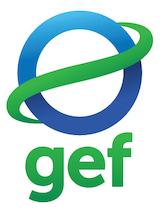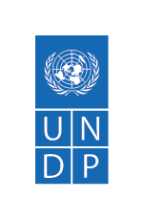Yemen National Adaptation Programme of Action (NAPA)
Yemen is highly vulnerable to climate change-related impacts such as drought, extreme flooding, pests, sudden disease outbreaks, changes of rainfall patterns, increased storm frequency/severity and sea level rise. These are serious concerns as Yemen's economy largely depends on its rural natural resources. Moreover, more than 75% of the population is rural-based engaged in farming and pastoralism and hence highly reliant on favorable climatic conditions for their livelihoods. Yemen's NAPA identifies priority sectors and establishes target projects for climate change adaptation.
Project details
Levels of intervention
- National
Key implementers
- Country Office
- National Governments
Funding amounts
Project partners
- Government of Yemen
- Global Environment Facility (GEF)
- United Nations Development Programme (UNDP)
Introduction
Yemen is highly vulnerable to climate change-related impacts such as drought, extreme flooding, pests, sudden disease outbreaks, changes of rainfall patterns, increased storm frequency/severity and sea level rise. These are serious concerns as Yemen's economy largely depends on its rural natural resources. Moreover, more than 75% of the population is rural-based engaged in farming and pastoralism and hence highly reliant on favorable climatic conditions for their livelihoods. Yemen's NAPA identifies priority sectors and establishes target projects for climate change adaptation.



Project details
Yemen has identified three main sectors that are vulnerable to climate change: water resources, agriculture, and coastal zones. Yemen is promoting sustainable use through optimal allocation of water resources and use of improved quality control techniques and working towards the protection of agricultural diversity, maintaining agricultural resources and developing sustainable agricultural programs. Sustainable use of marine and fishery resources through the development and strict implementation of policy, legislative and management tools are working to ensure harvest level of coastal resources are maintained within the biological limits of Yemen's coastal zones.
Yemen is an arid Middle Eastern country, occupying an area of 527,970 square kilometres at the southern end of the Arabian Peninsula. It is bordered to the north by Saudi Arabia, to the East by Oman, and to the South and West by a 2,200 km coastline along the Gulf of Aden, Arabian Sea and the Red Sea.
Yemen is highly vulnerable to climate change-related impacts such as drought, extreme flooding, pests, sudden disease outbreaks, changes of rainfall patterns, increased storm frequency/severity and sea level rise. These are serious concerns as Yemen's economy largely depends on its rural natural resources. Moreover, more than 75% of the population is rural-based engaged in farming and pastoralism and hence highly reliant on favorable climatic conditions for their livelihoods.
Climate Related Hazards
- Increased water scarcity and reduced water quality – leading to increased hardship on rural livelihoods
- Increased drought frequency, increased temperatures, and changes in precipitation patterns – leading to degradation of agricultural lands, soils and terraces
- Deterioration of habitats and biodiversity – leading to expansion of desertification
- Reduced agricultural productivity – leading to increased food insecurity and reduced income generating activities
- Increased sea levels – leading to deterioration of wetlands, coastal mangrove migration, erosion, infrastructure damage, and seawater groundwater intrusion
- Increased climatic variability – leading to the possibility of spread and growth of vector borne and water borne diseases
- Impacts on coastal zones leading to a loss of tourism activity due to sea level rise including loss of beaches
Main Human Vulnerabilities and Livelihood Impacts
- Agriculture
- Water Resources
- Human Health
- Human Settlements
- Energy
- Fisheries and Marine Resources
- Infrastructure Development
- Education
- Tourism
- Waste Management
- National
- Country Office
- National Governments
Through improved capacity building and project identification, government agencies and other actors will increase their abilities to insulate at risk urban and rural populations from the adverse effects of climate change.
- Government of Yemen
- Global Environment Facility (GEF)
- United Nations Development Programme (UNDP)
News
Key results and output
Priority Adaptation Projects
- Develop and Implement Integrated Coastal Zone Management (ICZM)
- Water conservation through reuse of treated waste and grey water
- Awareness Raising on Adaptation to Climate Changes
- Establishment and Maintaining of Climate Change Database
- Planting and re-planting of mangroves and palms for adaptation to sea level rise
- Develop and implement programs to improve Yemen’s preparedness to cope with extreme weather events
- Rainwater harvesting through various techniques including traditional methods
- Rehabilitation and maintenance of mountainous terraces
- Promotion of research on drought, heat and salinity tolerant varieties
- Sustainable land management to combat desertification and land degradation
- Sustainable management of fisheries resources
- Incorporation of Climate Change and adaptation into school education
Reports & publications
Videos & multimedia
Newsfeed
Contacts
- UNDPKeti ChachibaiaRegional Technical Advisor

